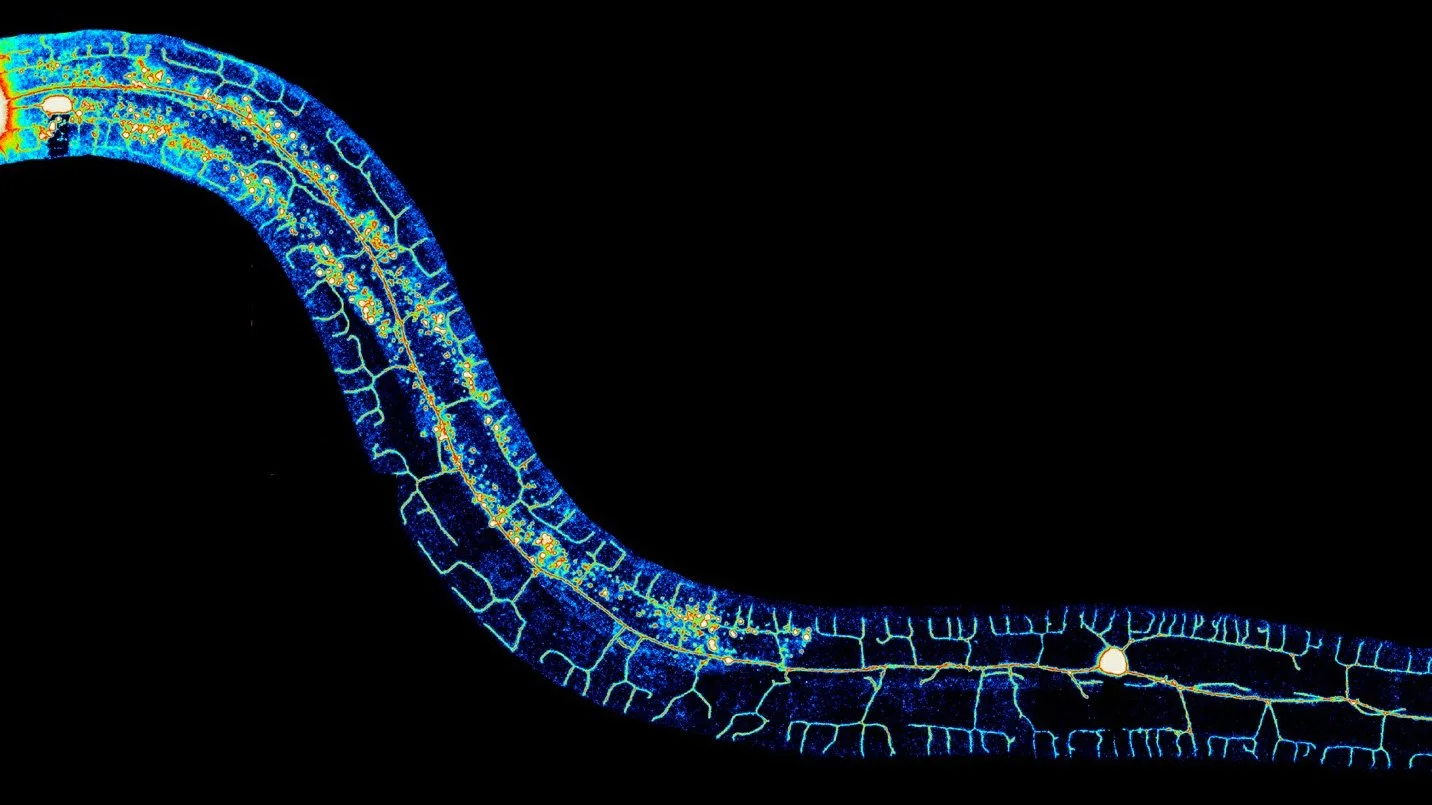Caenorhabditis elegans as a model of human disease
Caenorhabditis elegans (C. elegans) is a small, transparent nematode worm that has become a powerful model organism in biological research. Its popularity stems from several key advantages:
1. Genetic Similarity to Humans: Approximately 60-80% of human genes have orthologs in the C. elegans genome, and many human disease genes are conserved in the worm1. This genetic similarity allows researchers to study human diseases in a simpler organism.
2. Transparency: The transparent body of C. elegans allows for easy observation of internal structures and cellular processes under a microscope.
3. Short Life Cycle: C. elegans has a rapid life cycle of about 2-3 weeks, enabling quick generation turnover and efficient genetic studies.
4. Ease of Maintenance: C. elegans is easy to culture and maintain in the laboratory, requiring minimal space and resources.
5. Genetic Manipulability: Advanced genetic tools, such as RNA interference (RNAi) and CRISPR-Cas9, can be readily applied to C. elegans, facilitating the study of gene function and regulation.
6. Behavioral Assays: The nematode exhibits various behaviors, such as movement, feeding, and mating, which can be quantitatively measured and used in phenotypic screening.
7. Conserved Pathways: Many biochemical and signaling pathways are conserved between C. elegans and humans, making it a relevant model for studying human diseases.
Neurodegenerative Diseases: C. elegans has been used to model neurodegenerative diseases such as Alzheimer's, Parkinson's, and Huntington's disease. The nematode's simple nervous system, consisting of only 302 neurons, allows for detailed studies of neuronal function and degeneration.
Aging and Longevity: C. elegans is an excellent model for studying aging and longevity due to its short lifespan and well-characterized genome6. Researchers can investigate the genetic and environmental factors that influence aging and identify potential therapeutic targets.
Toxicology and Drug Screening: The nematode is used in toxicology studies to assess the effects of environmental toxins and potential pharmaceutical compounds. Its small size and ease of culture make it ideal for high-throughput drug screening.
Genetic and Environmental Interactions: C. elegans allows researchers to study the interactions between genetic mutations and environmental factors, providing insights into complex disease mechanisms.
Caenorhabditis elegans offers numerous advantages as a research model, making it a valuable tool for studying human diseases and advancing biomedical research.
C. elegans as Disease Model Organism C. elegans is widely used as a disease model due to its ability to replicate human disease processes and its suitability for high-throughput screening. Some key applications include:
References:
Peter A. Kropp, Rosemary Bauer, Isabella Zafra, Carina Graham, Andy Golden; Caenorhabditis elegans for rare disease modeling and drug discovery: strategies and strengths. Dis Model Mech 1 August 2021; 14 (8): dmm049010. doi: https://doi.org/10.1242/dmm.049010
Kim A. Caldwell, Corey W. Willicott, Guy A. Caldwell; Modeling neurodegeneration in Caenorhabditis elegans. Dis Model Mech 1 October 2020; 13 (10): dmm046110. doi: https://doi.org/10.1242/dmm.046110
Caenorhabditis elegans in drug discovery
Advantages of Caenorhabditis elegans in Drug Discovery
Cost-Effective and High-Throughput: C. elegans is small and easy to cultivate in large numbers, making it ideal for high-throughput drug screenings. This nematode allows for large-scale testing of compounds in a cost-effective manner, significantly reducing research costs compared to mammalian models
Complex Biological Processes: Despite its simplicity, C. elegans exhibits complex biological processes similar to those in humans. This makes it a valuable model for understanding the effects of drugs on cellular and organismal functions. For example, it has been used to study the mechanisms of neurodegeneration, aging, and metabolism
Genetic Tractability: C. elegans has a well-annotated genome and is highly amenable to genetic manipulation. Techniques such as RNA interference (RNAi) and CRISPR-Cas9 allow researchers to easily knock down or edit genes, facilitating the identification of drug targets and the study of gene-drug interactions
Ethical Considerations: The use of C. elegans in research addresses some ethical concerns associated with using higher animals. As an invertebrate, it is not subject to the same ethical regulations as vertebrate models, allowing for more flexible experimental designs
Conservation of Disease Pathways: Many disease-related genes and pathways are conserved between C. elegans and humans. This conservation allows researchers to study the effects of potential therapeutic compounds on human disease processes in a simpler and more controlled environment
In conclusion, Caenorhabditis elegans offers numerous advantages as a research model, making it a valuable tool for studying human diseases and advancing biomedical research.
The nematode Caenorhabditis elegans (C. elegans) has emerged as a powerful model organism in the realm of drug discovery and high-throughput screenings. Its simplicity, combined with its genetic similarity to humans, has positioned C. elegans as an indispensable tool for identifying potential therapeutic compounds and understanding disease mechanisms.
References
Giunti S, Andersen N, Rayes D, De Rosa MJ. Drug discovery: Insights from the invertebrate Caenorhabditis elegans. Pharmacol Res Perspect. 2021 Apr;9(2):e00721. doi: https://doi.org/10.1002/prp2.721
Huang Z, Ma L, Mishra A, Turnbull JE, Tu H. Editorial: C. elegans as an emerging model of pharmacological innovation. Front Pharmacol. 2022 Sep 27;13:1029752. doi: https://doi.org/10.3389/fphar.2022.1029752


